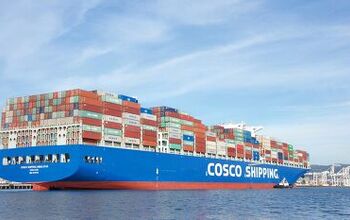A Comprehensive Look At What TTAC Readers Drive, In Three Charts
In December, we conducted an informal survey of what TTAC readers are driving via a Question of the Day format. I’m happy to say that the results of that questionnaire are finally available, and we have our best look yet at what kind of cars TTAC readers are driving.
With the help of a B&B member who wishes to remain anonymous, the responses were compiled into an Excel spreadsheet and analyzed. Our own chart master Tim Cain drew up a couple graphs to better represent the pertinent data points in this exercise.
According to our data, the Honda Accord is the most popular car among TTAC readers is the Honda Accord. This is probably the least surprising data point in the whole set. The Accord is consistently recognized by everyone from the buff books to consumer oriented publications as the best blend of driving dynamics, reliability, value and practicality, and all of these are attributes that TTAC readers seem to value greatly.
Other stalwarts like the Ford Mustang, Mazda MX-5 and Ford Ranger also ranked fairly high. What surprised me was the Toyota Corolla, the supposed paragon of appliance-like motoring, coming in at #6. Not a single Panther made the top 20 list. A mere 19 respondents admitted to owning Panther platform cars, which would rank them, in aggregate, just behind the Golf and ahead of the Cherokee. Of those, 8 were Town Cars, representing the single most popular Panther nameplate. Of the editors with recent new vehicles, Jack owns an Accord, Bark has a Mustang and I have a Mazda3, all of which rank in the top half.
Volkswagen, which has a nearly satanic reputation among the commenters for poor reliability, is evidently a fan favorite, with the Jetta ranking fourth, the GTI tied for ninth and the Golf coming in at Volkswagen had three vehicles in the top 20, ahead of Honda, Nissan, Toyota and Mazda, and the Beetle and Passat came in tied for 20th place with the Mazda Protege and Jeep Wrangler.
Speaking of Volkswagen, the German conglomerate ranks as the third most popular auto maker. Ford is number one with a bullet, followed by Honda. Mazda is also exceptionally popular relative to their position in the overall marketplace, and while no individual BMW model ranked in our top 20, as a whole they merited seventh place.
To me, this is the most interesting chart. TTAC’s breakdown shares some distinct similarities with the United States automotive market, and also some major differences. Yes, Ford and GM dominate, but Volkswagen could only dream of 11.2 percent market share in America. Honda is also much, much stronger than Toyota on planet TTAC, which has Mazda (!!) nipping at its heels. Hyundai-Kia, a global juggernaut, is bested by tiny Subaru. But one thing that stays constant – a handful of auto makers duke it out for the spoils, with everyone else left waiting for table scraps.
More by Derek Kreindler
Latest Car Reviews
Read moreLatest Product Reviews
Read moreRecent Comments
- 1995 SC Man it isn't even the weekend yet
- ToolGuy Is the idle high? How many codes are behind the check engine light? How many millions to address the traction issue? What's the little triangular warning lamp about?
- Ajla Using an EV for going to landfill or parking at the bad shopping mall or taking a trip to Sex Cauldron. Then the legacy engines get saved for the driving I want to do. 🤔
- SaulTigh Unless we start building nuclear plants and beefing up the grid, this drive to electrification (and not just cars) will be the destruction of modern society. I hope you love rolling blackouts like the US was some third world failed state. You don't support 8 billion people on this planet without abundant and relatively cheap energy.So no, I don't want an electric car, even if it's cheap.
- 3-On-The-Tree Lou_BCone of many cars I sold when I got commissioned into the army. 1964 Dodge D100 with slant six and 3 on the tree, 1973 Plymouth Duster with slant six, 1974 dodge dart custom with a 318. 1990 Bronco 5.0 which was our snowboard rig for Wa state and Whistler/Blackcomb BC. Now :my trail rigs are a 1985 Toyota FJ60 Land cruiser and 86 Suzuki Samurai.





































Comments
Join the conversation
Impressive write around of the 4 Subaru's in the top 20. The actual by brand chart shows why, but mentioning VWs 3 entries and everyone they bested without mentioning the brand that somehow leveraged a sub 4% share into 4 of 20 top models must have taken mental effort.
Darn, I missed this survey when it came out. I would have been interested to know how many other Chevy Cruze Diesel folks were on TTAC.